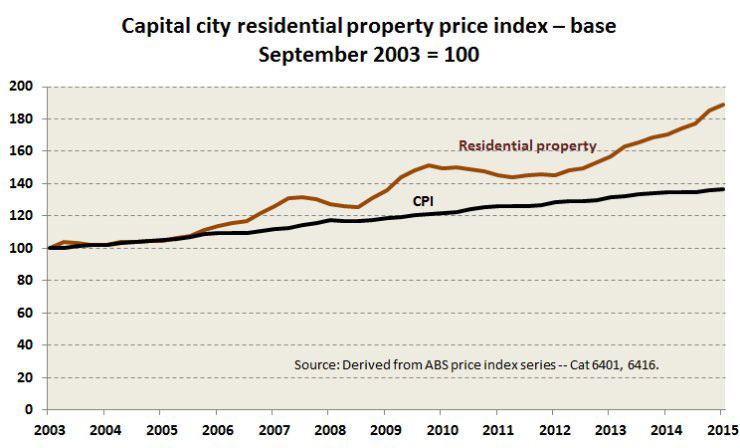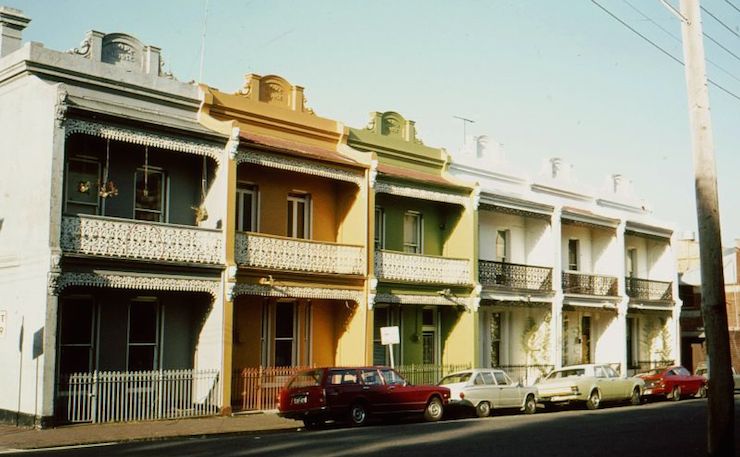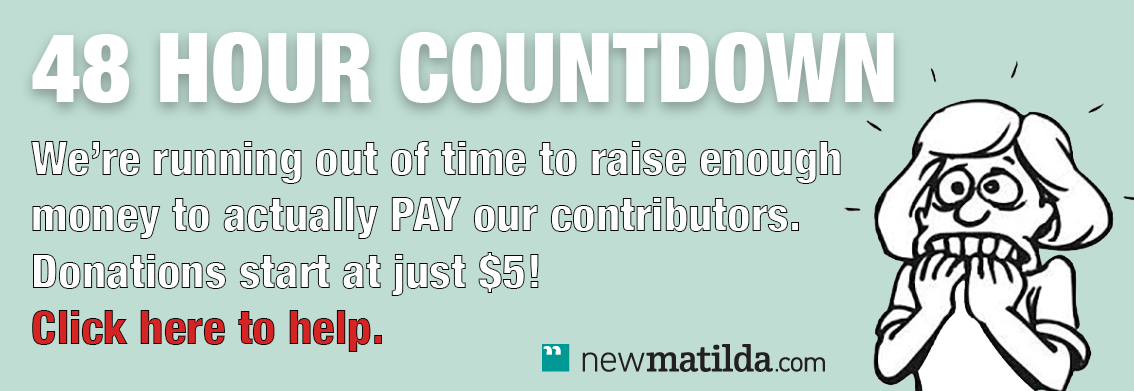The nation’s housing bubble continues to grow, courtesy of a raft of incentives for people who can afford to buy into the market. Ian McAuley explains.
The first two big statistical releases for this year carry good economic news. Labour force figures show 300,000 more people gained employment over last year, and the Consumer Price Index (CPI), coming in at an annual 1.7 per cent, suggests inflation is in the Goldilocks zone – not too hot, not too cold.
But before we start celebrating we should remember that employment is what economists call a “lagging indicator”. As an economy sinks into a recession, employment holds up for a while, and as an economy recovers, employment is slow to pick up (a warning of tough times ahead came with the release of figures recently revealing a severe deterioration in our terms of trade).
The CPI also should be interpreted with caution, because in spite of the significant devaluation of our currency, intense global and local competition and low international oil prices have kept prices of imports in check. For example, had gasoline prices not fallen over the year the CPI would have come in at 2.0 per cent.
In other words, this may be as good as it gets. At some stage price wars will end, oil prices will recover, and inflation will once again be on the way up.
The other limitation of the CPI is that while it picks up the cost of buying new houses, it does not cover the cost of the land on which those houses or apartments sit. House and land prices are covered in the ABS residential property price surveys, and because the CPI figures reveal only modest rises in house building costs, almost all of the price rises in these property price surveys relate to land. That reveals a different story.
Over the year to September 2015 (the latest month for ABS statistics) housing prices in our capital cities rose by 11 per cent – including a whopping 20 per cent in Sydney. The media has given some prominence to data from a private property group showing that Sydney prices have eased in the last quarter, but that same data shows steeply rising prices in most other capitals.

In fact, over the last 10 years, housing prices have been trending upwards, most strongly since 2012: the graph above shows housing prices relative to the CPI.
A recently-released Demographia survey of housing affordability, covering 367 cities in nine developed countries, finds that Sydney occupies the second to top spot in terms of unaffordability, as measured by the ratio of median house prices to median household income (the top spot goes to Hong Kong).
For Sydney that ratio is 12.2 – meaning the median-priced house in Sydney (now valued over $1 million) now costs 12 years of median household income. Melbourne comes in at sixth place, with a ratio of 9.7. All our capitals, as well as a number of rural cities (Bathurst, Warrnambool and Dubbo among others) show ratios above 5.0, which the surveyors classify as “severely unaffordable”.
By contrast most cities in North America, including some large cities such as Philadelphia and Chicago show ratios under 4.0.
Something has gone wrong, and some economists – even Treasury Secretary John Fraser – have been warning of a bubble in housing prices. But many who own their houses outright, and others who have seen their mortgages shrink in relation to their house values, see their rising house prices as something to celebrate.
It’s hard for most people to understand that asset price inflation is just as unreal as any other type of inflation, particularly when real-estate spruikers and tabloid newspapers portray people’s housing equity as “wealth”.
In fact the real value of a house, in terms of providing comfort and security, changes little over time, and may even fall if it is not well maintained.
When questioned on the ABC Breakfast Show on last week, Acting Minister for Cities, Greg Hunt acknowledged that housing affordability is indeed a problem, but his responses all focussed on the supply side: that is on ways to increase the supply of housing in order to reduce prices.
Keeping up the message from the Trade Union “Royal” Commission he managed to take a swipe at building unions (even though the high prices relate to land prices rather than construction costs), and, echoing the line of Family First Senator Bob Day, he focussed his responses on making more land available on our city fringes.
No doubt releasing more land would bring prices down in most cities (but less so in Sydney which is geographically constrained). And no doubt more land releases would bring joy to property speculators, who, as we know from the NSW Independent Commission Against Corruption, have been some of the Liberal Party’s most generous donors.
It’s questionable, however, whether we want to go down the path of more urban sprawl. Our cities already have large footprints, with population densities that are low by world standards.
Melbourne wraps more than 100 km around Port Phillip Bay. Adelaide stretches 90 km from Gawler to Willunga. Decades of neglect of infrastructure investment (the “small government” obsession) have resulted in severe congestion on both roads and public transport.
Additional residents, in adding to congestion, would impose costs on all, and they themselves would run the risk of owning valueless real-estate when, in time, the costs of commuting become too high.
If we do want to provide more living space, then we should be looking once more at growth centres away from our existing big cities – settlements in the 50,000 to 100,000 range where scale economies still prevail over scale diseconomies – which, if well-designed, can provide a range of urban amenity while incurring low environmental costs. The government’s main role in promoting such development should be to provide a network of rail, road and broadband.
Such a settlement pattern, however, would be strongly resisted by the National Party, which is unenthusiastic about the prospect of urbanisation changing the demographics of its electorates. It’s already losing ground in coastal electorates in New South Wales, and it does not want to hasten its own political extinction.
More basically, as many economists point out, Australia does not have a supply problem: housing construction is more or less keeping up with population growth. Rather, the problem lies more on the demand side of the market.
To put it simply, it’s about a lot of people with lots of money to throw at housing pushing up prices. In some cases it’s about investors (including trustees of self-managed superannuation funds), scared off the stock market and seeking the supposed security of “bricks and mortar”.
Privileged tax provisions include a low effective rate of capital gains tax for medium-term investments, allowing “negative gearing”, and allowing investors to claim both depreciation and interest payments as tax deductions (i.e. both the cost of the asset and the cost of financing it).
These have all channelled funding into a market where supply is relatively fixed. As economists from all along the political spectrum are advising, cleaning up those breaks is where public policy should be directed.
Unfortunately, when Fran Kelly interviewed Greg Hunt she didn’t question him on these demand-side issues, choosing instead to raise the issue of tree-clearing for Sydney’s light rail – an important issue for Sydney people, but one where a Commonwealth Minister has almost no responsibility. As New Matilda readers know, it wouldn’t do for a popular ABC presenter to raise embarrassing questions with a Coalition minister.
Donate To New Matilda
New Matilda is a small, independent media outlet. We survive through reader contributions, and never losing a lawsuit. If you got something from this article, giving something back helps us to continue speaking truth to power. Every little bit counts.






